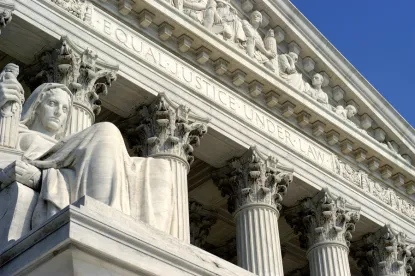The Supreme Court of the United States has now agreed to review a 2015 decision by the US Court of Appeals for the Federal Circuit regarding the proper measure of damages in cases of design patent infringement. Samsung Electronics Co., Ltd. v. Apple Inc., Case No. 15-777 (Supr. Ct., Mar. 21, 2016), cert. granted.
At the Federal Circuit, Samsung argued that it was legal error to allow the jury to award Apple all of Samsung’s profits on the infringing smartphones. Samsung argued that damages should have been limited to those profits that are proven to be causally attributable to the infringement, i.e., that Apple should have been required to apportion damages for infringement of design patents, the same way as is required for infringement of utility patents.
In rejecting Samsung’s argument, the Federal Circuit relied on the language of 35 USC § 289, which provides that the infringer of a design patent is “liable to the [patent] owner to the extent of [the infringer’s] total profit,” and held that § 289 explicitly authorizes an award of the total profits from an article of manufacture bearing the patented design. In doing so, the Court differentiated § 289 from § 284, which (in the context of utility patents) only authorizes damages “adequate to compensate for the infringement, but in no event less than a reasonable royalty.” Addressing criticism from an amicus brief on the allocation issue, the Federal Circuit noted that while “Amici 27 Law Professors argues that an award of a defendant’s entire profits for design patent infringement makes no sense in the modern world,” the Court is “bound by what the statute says, irrespective of policy arguments that may be made against it.” IP Update, Vol. 18, No. 6.
The order grants review on the second question raised in the petition: Where a design patent is applied to only a component of a product, should an award of infringer’s profits be limited to those profits attributable to the component?
In its petition, Samsung argues that nothing in § 289 “suggests that Congress exempted design patents from the background principles of causation and equity that inform all of patent law,” and that the Federal Circuit decision would provide a vehicle for design-patent holders to obtain “unjustified windfalls far exceeding the conceivable value of any inventive contribution” and is “an open invitation to litigation abuse.”
Other Supreme Court IP News
In the consolidated appeals regarding the appropriate test for awarding enhanced damages under 35 USC § 284, Halo Elecs. v. Pulse Elecs., Case No. 14-1513, and Stryker v. Zimmer, Case No. 14-152, the matter was argued and submitted on February 23, 2016, and is awaiting decision.
In the appeal regarding the appropriate claim construction and reviewability of institution decisions in inter partes reviews, Cuozzo Speed Techs. v. Lee, Case No. 15-446, oral argument is set for April 25, 2016.
In the copyright appeal regarding the appropriate standard for awarding attorneys’ fees under § 505 of the Copyright Act, Kirtsaeng v. John Wiley & Sons, Case No. 15-375, oral argument is set for April 25, 2016.




 />i
/>i

